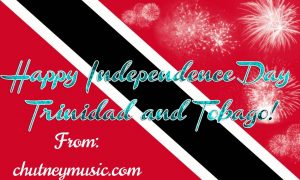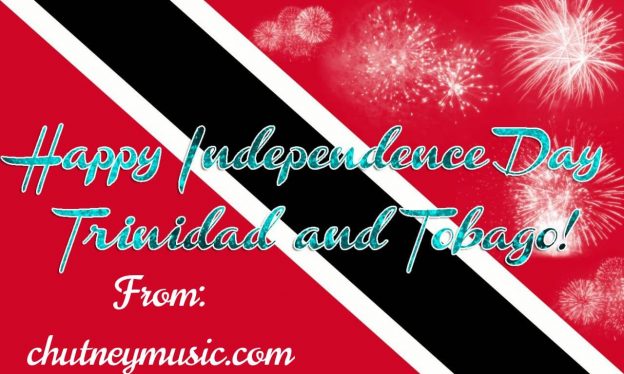
History
Until 1888, Trinidad and Tobago were separate territories. Both have a history of repeated invasion and conquest by competing European powers.
Trinidad, named Iere (probably meaning ‘humming bird’) by the Arawak inhabitants, was claimed for the Spanish Crown by Christopher Columbus in 1498. The embattled Spanish colony that developed was raided by the English, Dutch and French through the 17th century. Large-scale importation of African slaves enabled a plantation economy to develop. French Haitians (who were offered incentives by the Spanish Crown) swelled the settler population.
In 1797, the island surrendered to a British expedition and became a British Crown colony in 1802. Slaves were emancipated in 1834, free trade adopted in 1846, and more than 150,000 immigrants from India, China and Madeira brought in between 1845 and 1917. These indentured labourers came on short contracts, after which they were free to return home or buy plots of land. The Indians worked mainly on the sugar plantations of the Caroni and Naparima plains and introduced the cultivation of rice there.
Tobago’s name derives from the Carib word Tavaco, the pipe in which the Amerindians smoked tobacco leaves, and was inhabited by Caribs at the time of Columbus’s visit in 1498. These people had all been killed by 1632 when 300 Dutch settlers arrived. Further Dutch and French settlers followed. Tobago changed hands more frequently between 1650 and 1814 than any other Caribbean territory – ownership shifting from a settler (Cornelius Lampsius, declared owner and Baron of Tobago by Louis XIV of France) to the Duke of Courland, to a company of London merchants, to neutral status in 1748, to the English Crown by the Treaty of Paris of 1763.
Even then, Tobago was fought over. The French captured it in 1781; the British took it back in 1793; the French regained it through the Treaty of Amiens (1802), but it was returned to the British in 1814. Despite these battles, Tobago was prosperous until its sugar industry was weakened by the abolition of slavery, a hurricane, the decline of West Indian sugar in general and the Belmanna riots. No longer viable as a separate colony, it was amalgamated with the larger island of Trinidad in 1888.
The Spanish constitution was retained after Trinidad became a British Crown colony in 1802. The Governor was assisted by a council of advice and a cabildo elected by the taxpayers. The council of advice evolved into the nominated legislative council and the cabildo became Port of Spain’s town council. When Tobago was amalgamated with Trinidad in 1888, the laws of Trinidad were extended to the smaller island and, after a period, the revenues of the two islands were merged and Tobago’s debt to Trinidad cancelled. Tobago was administered by a commissioner (later a warden) appointed by the colony’s Governor.
In the 1920s, the labour movement organised trade unions, and pressure increased for greater local democracy and then independence. A new constitution brought a limited form of electoral representation to Trinidad for the first time (Tobago had had elections before). But only seven of the 25 members were elected, and high property and language qualifications limited the vote. This did not satisfy the growing demand for political expression, which led to the 1937 labour disturbances, an increase in the number of elected members in 1941 and, in 1945, universal adult suffrage.
In 1950, the constitution was redrawn, providing for a legislative council of 26 members, 18 of them elected; a policy-making executive council of nine (five elected by the legislative council), and a rudimentary ministerial system. Further constitutional changes followed, and by 1959, the legislative council had more elected members and an elected Speaker, and the ministerial system had developed into a cabinet elected from the legislative council. The Governor’s powers were circumscribed: he did not normally chair cabinet meetings, and had to act in accordance with the cabinet’s advice.
The 1956 elections gave the majority to the People’s National Movement (PNM), led by Dr Eric Williams. Williams instituted further constitutional talks with the UK in 1959–60, resulting in full internal self-government and a bicameral legislature (nominated Senate and elected House of Representatives). The general election of 1961 was again won by the PNM, which implemented the new constitution.
In 1958 Trinidad and Tobago became a co-founder of the Federation of the West Indies, which aimed to become an independent country, but Jamaica withdrew in 1961, and Trinidad and Tobago also decided to seek its own independence. Further constitutional talks with the UK began, and a draft constitution was drawn up after much consultation. The country became independent in August 1962, and a republic in 1976.
The PNM under Williams (and after his death in 1981, George Chambers) had a long run of electoral successes. Economic conditions worsened in the early 1980s and the PNM was ousted in 1986 by a coalition of opposition parties, the National Alliance for Reconstruction (NAR) led by A. N. R. Robinson. However, the coalition was troubled, and soon the United Labour Front (led by Basdeo Panday, Robinson’s deputy) quit the alliance to form the United National Congress (UNC).
In July 1990, an attempted coup was staged by a militant Muslim faction, which stormed parliament and took Robinson and members of parliament hostage for five days and led to an outbreak of looting in poor areas of the capital. The hostages were released on the promise of an amnesty, but the NAR government was never able to recover and the PNM, under Patrick Manning, won an easy electoral victory in December 1991.
The PNM lost its substantial majority at the November 1995 elections: it won 17 seats, exactly the same number as Panday’s UNC, while the NAR won two and thus held the balance of power. The NAR chose to support the UNC, which was then able to form a government, headed by Panday. Following the retirement of President Noor Hassanali, Robinson became the country’s President in February 1997.
The UNC’s position was strengthened by divisions within the PNM. Although its leader, Patrick Manning, won a leadership contest in October 1996, his challenger received 40 per cent of the votes. Two PNM MPs subsequently left the party, becoming independents. Both later began to support the UNC and were appointed government ministers. Consequently, although the UNC–NAR coalition remained intact, the UNC had a parliamentary majority on its own from the middle of 1997.
In June–July 1999, ten convicted murderers were hanged. These executions – the first since 1994 – had been delayed for several years by appeals to the Privy Council in the UK, and had only been carried out when the Privy Council had ruled that hanging was not in itself inhumane. The Caribbean Court of Justice was subsequently established in Port of Spain as the final court of appeal for CARICOM countries.
In the December 2000 general election, the UNC was re-elected, winning 19 of the 36 elected seats, while PNM took 16 and NAR one; Panday continued as Prime Minister. However, the PNM immediately challenged the result on the grounds that two UNC candidates had had dual nationality. There was further controversy when the President was unwilling to appoint seven of Panday’s nominations to cabinet posts who had all been defeated in the elections.
President Robinson finally gave way in February 2001 but the PNM’s challenge to the legitimacy of the two UNC members took far longer to resolve and the new administration continued in 2001 amid considerable uncertainty, which was only dispelled when a fresh national election was called for December 2001.
Credit to – https://thecommonwealth.org/our-member-countries/trinidad-and-tobago/history
Please consider Donating to keep our culture alive


